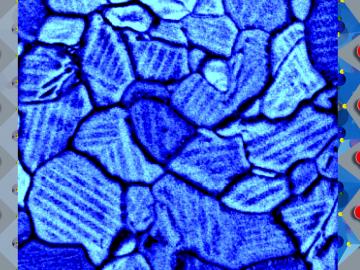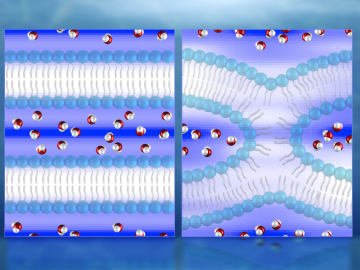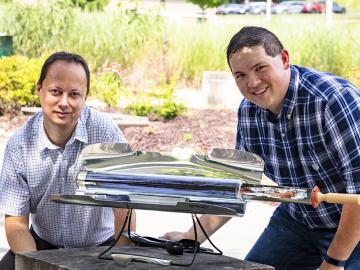
Filter News
Area of Research
- (-) Materials (204)
- (-) Neutron Science (77)
- Advanced Manufacturing (13)
- Biological Systems (14)
- Biology and Environment (40)
- Biology and Soft Matter (1)
- Building Technologies (3)
- Chemistry and Physics at Interfaces (4)
- Clean Energy (167)
- Climate and Environmental Systems (2)
- Computational Biology (4)
- Computational Engineering (2)
- Computer Science (4)
- Energy Frontier Research Centers (7)
- Energy Sciences (2)
- Fossil Energy (2)
- Fuel Cycle Science and Technology (1)
- Functional Materials for Energy (6)
- Fusion and Fission (17)
- Fusion Energy (2)
- Geographic Information Science and Technology (2)
- Isotope Development and Production (1)
- Isotopes (8)
- Materials Characterization (2)
- Materials for Computing (13)
- Materials Synthesis from Atoms to Systems (5)
- Materials Under Extremes (5)
- National Security (24)
- Nuclear Science and Technology (24)
- Nuclear Systems Modeling, Simulation and Validation (1)
- Nuclear Systems Technology (1)
- Quantum Condensed Matter (1)
- Quantum information Science (1)
- Reactor Technology (1)
- Sensors and Controls (1)
- Supercomputing (107)
- Transportation Systems (5)
News Type
News Topics
- 3-D Printing/Advanced Manufacturing (15)
- Advanced Reactors (1)
- Artificial Intelligence (4)
- Big Data (1)
- Bioenergy (9)
- Biology (8)
- Biomedical (7)
- Biotechnology (1)
- Buildings (2)
- Chemical Sciences (20)
- Climate Change (5)
- Composites (3)
- Computer Science (11)
- Coronavirus (7)
- Critical Materials (8)
- Cybersecurity (4)
- Decarbonization (5)
- Energy Storage (20)
- Environment (10)
- Exascale Computing (1)
- Frontier (3)
- Fusion (3)
- Grid (2)
- High-Performance Computing (3)
- Isotopes (5)
- ITER (1)
- Machine Learning (2)
- Materials (40)
- Materials Science (39)
- Microscopy (12)
- Molten Salt (2)
- Nanotechnology (22)
- National Security (3)
- Net Zero (1)
- Neutron Science (42)
- Nuclear Energy (3)
- Partnerships (8)
- Physics (16)
- Polymers (6)
- Quantum Computing (1)
- Quantum Science (11)
- Renewable Energy (1)
- Security (2)
- Space Exploration (1)
- Summit (4)
- Sustainable Energy (8)
- Transformational Challenge Reactor (1)
- Transportation (6)
Media Contacts

The Spallation Neutron Source at the Department of Energy’s Oak Ridge National Laboratory has broken a new record by ending its first neutron production cycle in fiscal year 2019 at its design power level of 1.4 megawatts.

Seven researchers from the Department of Energy’s Oak Ridge National Laboratory have been chosen by the Innovative and Novel Computational Impact on Theory and Experiment, also known as INCITE, program to lead scientific investigations that require the nation’s mo...

Three researchers from the Department of Energy’s Oak Ridge National Laboratory have been elected fellows of the American Physical Society (APS). Fellows of the APS are recognized for their exceptional contributions to the physics enterprise in outstanding resear...

Scientists at the Department of Energy’s Oak Ridge National Laboratory used neutrons, isotopes and simulations to “see” the atomic structure of a saturated solution and found evidence supporting one of two competing hypotheses about how ions come


A unique combination of imaging tools and atomic-level simulations has allowed a team led by the Department of Energy’s Oak Ridge National Laboratory to solve a longstanding debate about the properties of a promising material that can harvest energy from light. Th...


Chemists at the Department of Energy’s Oak Ridge National Laboratory have demonstrated a practical, energy-efficient method of capturing carbon dioxide (CO2) directly from air. They report their findings in Nature Energy. If deployed at large scale and coupled to geo...

Scientists at the Department of Energy’s Oak Ridge National Laboratory induced a two-dimensional material to cannibalize itself for atomic “building blocks” from which stable structures formed. The findings, reported in Nature Communications, provide insights that ...



